<Back to Index>
- Field Marshal of the British Army Colin Campbell, 1st Baron Clyde, 1792
- Major General of the British Army Henry Havelock, 1795
- Brigadier General of the British Army Henry Montgomery Lawrence, 1806
PAGE SPONSOR
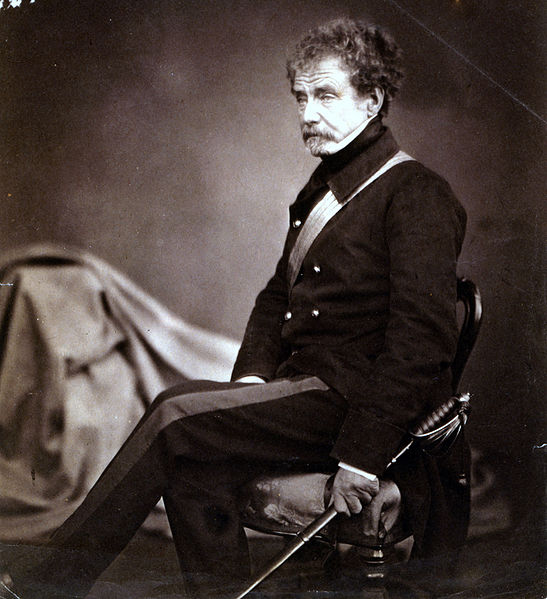
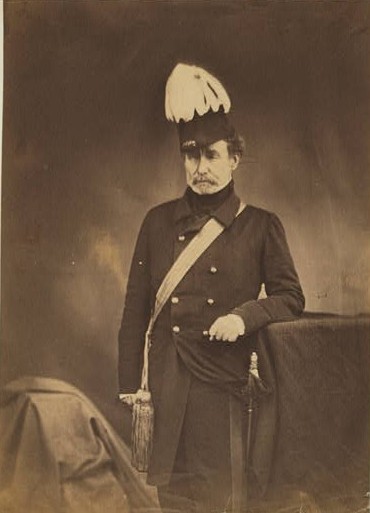
Field Marshal Colin Campbell, 1st Baron Clyde GCB, KSI (20 October 1792 – 14 August 1863) was a British Army officer from Scotland who led the Highland Brigade in the Crimea and was in command of the ‘Thin red line’ at the battle of Balaclava. He later commanded the relief army in the Indian Mutiny of 1857.
He was born Colin Macliver, the eldest of the four children of John Macliver, a carpenter in Glasgow, Scotland, and his wife Agnes Campbell. He was educated at the High School of Glasgow, but the age of ten, his mother's brother Colonel John Campbell placed him in the Royal Military and Naval Academy at Gosport. When he was only fifteen and a half, his uncle presented him to the Duke of York. The Duke enlisted the boy under the surname of Campbell, which he adopted for life.
One year later, aged sixteen, he obtained an ensignancy in the 9th Regiment of Foot through the influence of his uncle. His first opportunity at active service soon came. He fought under Wellington at the Battle of Vimeiro. He later retreated with the rest of Sir John Moore's army to Corunna, and was present at the Battle of Corunna. He fought throughout the Peninsular War, and was severely wounded while leading a storming party in the attack on San Sebastián. He was again wounded at the passage of the Bidassoa and compelled to return to the United Kingdom, where his conspicuous gallantry was rewarded by promotion.
Campbell served in Nova Scotia with the 7th Battalion, 60th Regiment in the War of 1812. After the peace of 1815, he devoted himself to studying military science. In 1823, he quelled the slave rebellion in Demerara, and two years later bought himself a major's rank. In 1832, he became lieutenant - colonel of the 98th Foot and rendered distinguished service in 1842 during the First Opium War. Campbell next saw action in India, in the Second Anglo - Sikh War of 1848 - 1849, under Sir Hugh Gough. He was wounded at the battle of Chillianwala. At the decisive victory of Gujrat, his skill and valor contributed largely to the success of the British forces; his "steady coolness and military precision" were highly praised in official dispatches. He was made a Knight Commander of the Order of the Bath in 1849, and specially named in the thanks of Parliament.
After further service in India, Campbell returned home in 1853. The next year, the Crimean War broke out, and he accepted the command of the Highland Brigade, which formed part of the Duke of Cambridge's division. The brigade and its leader distinguished themselves very greatly at the Battle of Alma; and with his "thin red line of Highlanders" he repulsed the Russian attack on Balaclava. At the close of the war, Sir Colin was promoted to Knight Grand Cross of the Bath, and elected honorary D.C.L. of Oxford University.
His military ability had been late in being recognized; but his true worth was soon appreciated. In 1857 what started as a mutiny of sepoy soldiers in India spread to a general insurrection in the north of the areas of India controlled by the East India Company. The initial successes of the rebellion led Lord Palmerston to offer him the command of British forces there on July 11, 1857. On being asked when he would be ready to set out, Campbell replied, "Within twenty - four hours." He left England the next evening, and reached Calcutta on August 13. After spending over two months in the capital to organize his resources, he started for the front on October 27, and on November 17 relieved Lucknow for the second time. Campbell, however, considered Lucknow a false position, and once more abandoned it to the rebels, retaking it in March 1858. He continued in charge of the operations in Oudh until the embers of the revolt had died away. For these services he was raised to the peerage in 1858 as Baron Clyde, of Clydesdale in Scotland. After returning to the United Kingdom in the next year, he received the thanks of both Houses of Parliament and a pension of £2000 a year. He was promoted to Field Marshal in 1862.
Despite lacking the dash which won Britain so many victories in India, Campbell was regarded as a brave soldier and a careful and prudent leader. The soldiers whom he led were devotedly attached to him; and he commanded unvarying respect. Nicknames given by those who disliked his safety - first style of generalship, included 'Sir Crawling Camel' and 'Old Slowcoach'.
Lord Clyde never married and the barony became extinct on his death in August 1863, aged 70. He was buried in Westminster Abbey.
A statue was erected to him in his native town, from whom he had also
received the Sword of Honour, one of many he received from throughout
Britain. Another statue of him, by Carlo Marochetti, was erected in Waterloo Place, London, in 1867. The town of Clyde, New Zealand, was named after him in 1865. The town of Campbellpore (Campbellpur), Attock, in present day Pakistan, was named after him in 1908.
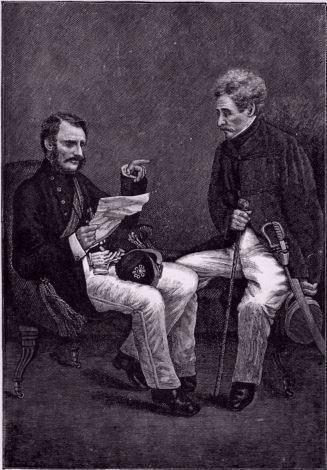
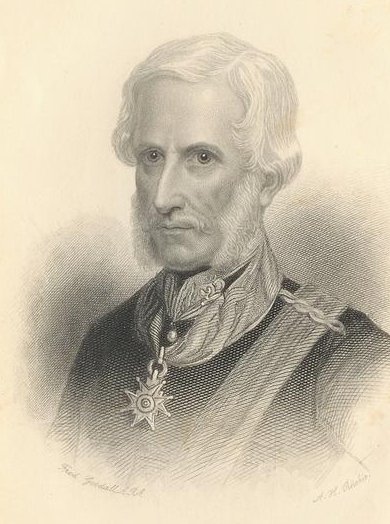
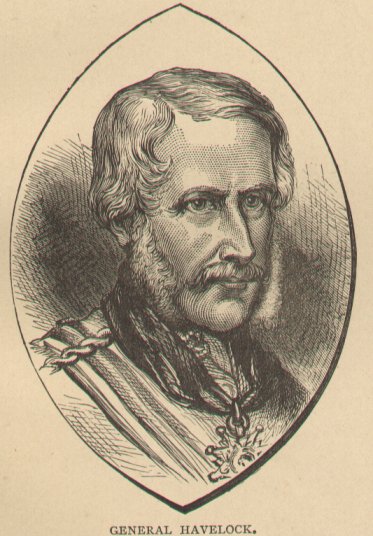
Major-General Sir Henry Havelock, KCB (5 April 1795 – 24 November 1857) was a British general who is particularly associated with India. He was noted for his recapture of Cawnpore from rebels during Indian Rebellion of 1857.
Henry Havelock was born at Ford Hall, Bishopwearmouth (now in Sunderland), the son of William Havelock, a wealthy shipbuilder, and Jane, daughter of John Carter, solicitor, of Stockton - on - Tees. He was the second of four brothers, all of whom entered the army. The family moved to Ingress Park, Dartford, Kent, when Henry was still a child, and here his mother died in 1811. From January 1800 until August 1804 Henry attended Dartford Grammar School as a parlor boarder with the Master, Rev John Bradley, after which he was placed with his elder brother in the boarding house of Dr. Raine, headmaster of Charterhouse School until he was 17. Among his contemporaries at Charterhouse were Connop Thirlwall, George Grote, William Hale, Julius Hare, and William Norris, the last two being his special friends. Shortly after leaving Charterhouse his father lost his fortune by unsuccessful speculation, sold Ingress Hall, and removed to Clifton.
In accordance with the desire of his mother he entered the Middle Temple in 1813, and became a pupil of Joseph Chitty; his fellow student was Thomas Talfourd.
Henry's legal studies having been interrupted by a misunderstanding
with his father, Havelock was thrown upon his own resources, and obliged
to abandon the law as a profession. By the good offices of his brother
William, who had distinguished himself in the Peninsular War and at Waterloo, he obtained on 30 July 1815, at the age of 20, a post as second lieutenant in the 95th Regiment of Foot, Rifle Brigade, and was posted to the company of Captain Harry Smith,
who encouraged him to study military history and the art of war. He was
promoted lieutenant on 24 October 1821. During the following eight
years of service in Britain he read extensively all the standard works and acquired a good acquaintance with the theory of war.
Seeing no prospect of active service, he resolved to go to India, and at the end of 1822 transferred into the 13th Regiment (Light Infantry), then commanded by Major Robert Sale, and embarked on the General Kyd in January 1823 for India. Before embarkation he studied the Persian and Hindustani languages with success under John Borthwick Gilchrist. During the voyage a brother officer, Lieutenant James Gardner, awakened in Havelock religious convictions which had slumbered since his mother's death, but henceforth became the guiding principle of his life.
Havelock served with distinction in the First Anglo - Burmese War (1824 – 1826), after which he returned to England and married Hannah Shepherd Marshman, the daughter of eminent Christian missionaries Dr. and Mrs. Joshua Marshman. At about the same time he became a Baptist, being baptized by Mr. John Mack at Serampore. He introduced some of his new family's missionary ideas to the army and began the distribution of bibles to
all soldiers. He also introduced all - rank bible study classes and
established the first non-church services for military personnel.
By the time Havelock took part in the First Afghan War in 1839, he had been promoted to the rank of captain. He was present as aide - de - camp to Willoughby Cotton at the capture of Ghazni, on the 23 May 1839, and at the occupation of Kabul. After a short period in Bengal to secure the publication of his Memoirs of the Afghan Campaign, he returned to Kabul in charge of recruits, and became interpreter to General Mountstuart Elphinstone.
In 1840, being attached to Sir Robert Henry Sale's force, he took part in the celebrated passage of the defiles of the Ghilzais and in the fighting from Tezeen to Jalalabad. Here, after many months siege, his column in a sortie en masse defeated Akbar Khan on the 7 April 1842. He was now made Deputy Lieutenant - General of the infantry division in Kabul, and in September he assisted at Jagdalak, at Tezeen, and at the release the British prisoners at Kabul, besides taking a prominent part at Istalif. He next went through the Mahratta campaign as Persian interpreter to Sir Hugh Gough, and distinguished himself at Maharajpur in 1843, and also in the Sikh Wars at the battles of Mudki, Ferozeshah and Sobraon in 1845.
He
used his spare time to produce analytical reports about the skirmishes
and battles in which he was involved. These writings were returned to
Britain and were reported on in the press of the day. For his military
services he was made Deputy Adjutant - General at Bombay. He transferred
from the 13th Regiment of Foot to the 39th, then as second major into the 53rd at
the beginning of 1849, and soon afterwards left for England, where he
spent two years. He returned to India in 1852 with further promotion and
in 1854 he was appointed Quartermaster - General, promoted to full
colonel, and lastly appointed Adjutant - General to the British Army in
India in 1857.
In that year, he was selected by Sir James Outram to command a division in the Anglo - Persian War, during which he was present at the action of Muhamra against the forces of Nasser al-Din Shah under command of Khanlar Mirza. Peace with Persia freed his troops just as the Indian Mutiny broke out; and he was chosen to command a column to quell disturbances in Allahabad, to support Sir Henry Lawrence at Lucknow and Wheeler at Cawnpore, and to pursue and utterly destroy all mutineers and insurgents. Throughout August Havelock led his soldiers northwards across Oudh (present day Uttar Pradesh), defeating all rebel forces in his path, despite being greatly outnumbered. His years of study of the theories of war and his experiences in earlier campaigns were put to good use. At this time Lady Canning wrote of him in her diary: "General Havelock is not in fashion, but all the same we believe that he will do well." But in spite of this lukewarm commendation Havelock proved himself the man for the occasion and won a reputation as a great military leader.
Three times he advanced for the relief of the Lucknow, but twice held back rather than risk fighting with troops wasted by battle and disease. Reinforcements arrived at last under Outram, and he was able to capture Lucknow on 25 September 1857. However, a second rebel force arrived and besieged the town again. This time Havelock and his troops were caught inside the blockade.
There he died on the 24 November 1857 of dysentery, a few days after the siege was lifted. The illness was likely brought on by the anxieties and fatigue connected with his victorious march and with the subsequent blockade of the British troops. He lived long enough to receive news that he was to be created a Baronet for the first three battles of the campaign; but he never knew of the major - generalship which was conferred shortly afterwards. With his baronetcy was a pension of £1,000 a year voted by Parliament. He was also appointed Colonel of the 3rd (East Kent) Regiment of Foot ("The Buffs") in December, as the news of his death still had not reached England. The baronetcy was afterwards bestowed upon his eldest son, Henry, in the following January; while to his widow, by Royal Warrant of Precedence, were given the rights to which she would have been entitled had her husband survived and been created a baronet. Parliament awarded pensions of £1,000 a year to both widow and son.
There is a statue of Havelock (by William Behnes) in Trafalgar Square, London. The plaque on the plinth reads: To Major General Sir Henry Havelock KCB and his brave companions in arms during the campaign in India 1857. "Soldiers! Your labours, your privations, your sufferings and your valour, will not be forgotten by a grateful country" H. Havelock. In 2003, there was major controversy when the then mayor of London, Ken Livingstone suggested that the Trafalgar Square statue, together with that of General Charles James Napier, be replaced with "more relevant" figures.
William Behnes also designed the statue of Havelock at the top of Building Hill in Mowbray Park Sunderland. Two cannon (replicas
of those used at the Siege of Lucknow) stand beside the statue, facing
north commanding the view over the park. The statue, however, looks west
towards Havelock's birthplace. The statue reads: Born 5, April 1795 at Ford Hall Bishopwearmouth Died 24 November 1857 at Dil-Koosa Lucknow.
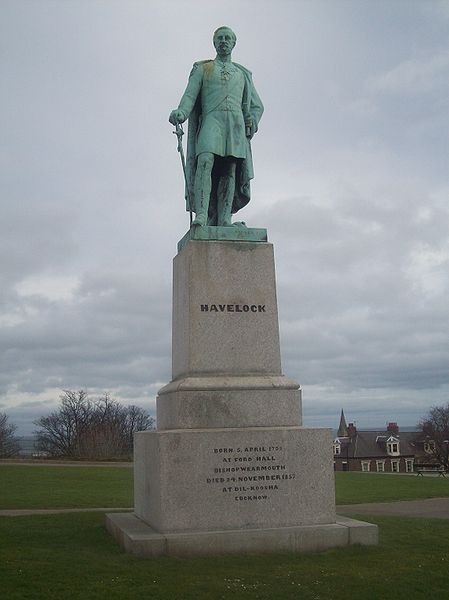
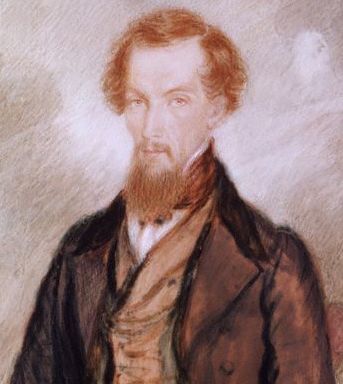
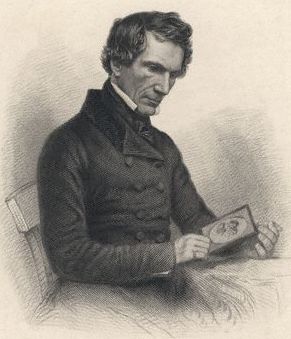
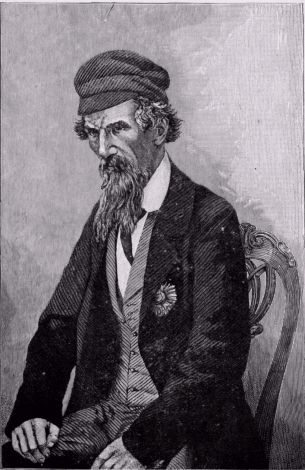
Sir Henry Montgomery Lawrence (28 June 1806 – 4 July 1857) was a British soldier and statesman in India, who died defending Lucknow during the Indian Mutiny.
Lawrence was the brother of John Lawrence, 1st Baron Lawrence and was born at Matara, Ceylon. Educated at Foyle College, Derry and then Addiscombe, in 1823 he joined the Bengal Artillery at the Calcutta suburb of Dum Dum, where also Henry Havelock was stationed about the same time. In the first Burmese War, Lawrence and his battery formed part of the Chittagong column which General Morrison led over the jungle covered hills of Arakan, until fever decimated them, and Lawrence found himself back in Britain, wasted by a disease that never completely left him. He returned to India in 1829, and was appointed revenue surveyor by Lord William Bentinck at Gorakhpur. He spent some years in camp, during which he married his cousin Honoria Marshall, and surveyed every village in four districts, each larger than Yorkshire. He was then recalled to a brigade by the outbreak of the First Afghan War towards the close of 1838.
As assistant to Sir George Russell Clerk, he now added to his political experience in the management of the district of Ferozepore; and when news of disaster came from Kabul in November 1841 he was sent to Peshawar in order to push up supports for the relief of Sale and the garrison of Jalalabad. He was often unpopular with higher authorities due to his insistence that government should pay most attention to the welfare of the Indian population.
At the end of the First Anglo - Sikh War, the Treaties executed provided for a garrison to be based in Lahore. Lawrence remained there as Agent to the Governor General in charge of political relations of the British government with the Darbar. By the Treaty of Bhairowal (1846), he was made the Resident at Lahore as well as Agent to the Governor - General for the North West Frontier. While here, he governed the area with the help of officers, who were later known as 'Henry Lawrence's Young Men'.
In 1856, he was appointed to the newly annexed province of Awadh as Chief Commissioner. In 1857 the Siege of Lucknow took
place in the province and the British community, including the garrison
of some 1700 men, took refuge in the British residency when the siege
began on 30 June. Commander Henry Lawrence was one of the first
casualties, being wounded by an exploding shell on 2 July and dying two
days later. When Lawrence was critically injured, he is supposed to have
said to those around him: "Put on my tomb only this; Here lies Henry
Lawrence who tried to do his duty." This epitaph appears on his
tombstone at the Residency graveyard.
Henry Lawrence established at three places, at that time all within India - the Lawrence Asylums for the education of the children of European soldiers serving in India. These institutions exist even today as the prestigious Lawrence School, Sanawar (HP, India), Lovedale (TN, India) and Ghora Ghali (Murree, Pakistan).
Henry Lawrence Island in the Indian Ocean, at 12N 93E, is named after him, as is the town of Lawrence in New Zealand.